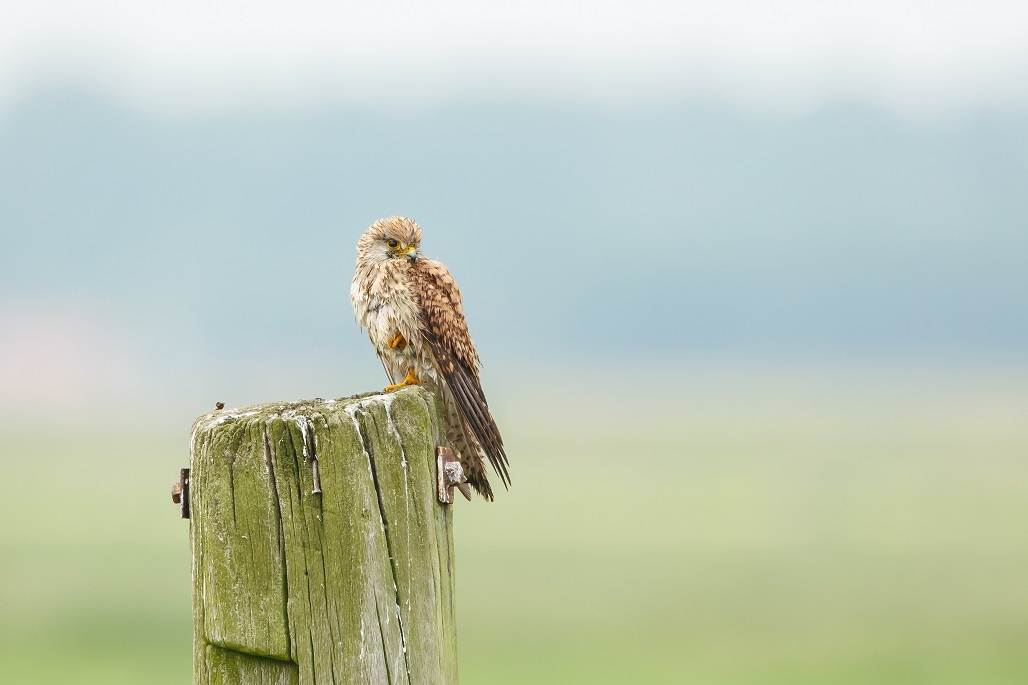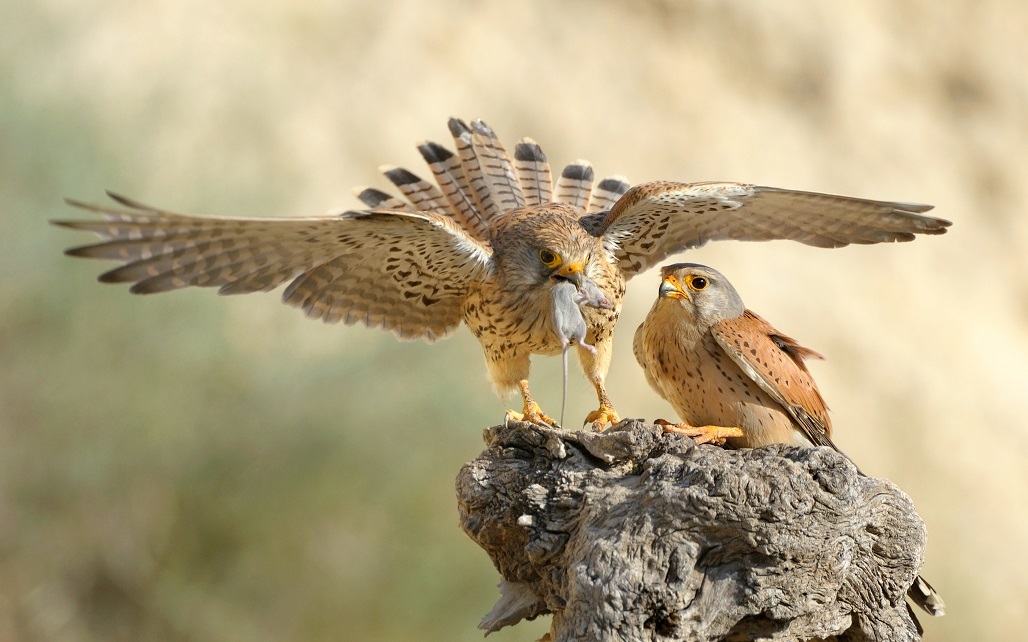A once-familiar sight hovering by roadsides, the bird of prey has suffered a dramatic drop in numbers.
I have long had a soft spot for a creature that was once our most common bird of prey. And I came across one again recently, shut in a boiler room at the Aberfeldy Distillery – a dapper little male kestrel.
As thin as a wraith, it weighed less than four ounces, when normally it should have been double that. Despite being cold and starving, it appeared uninjured. I gave it tiny amounts of warm fluids, placed it on a hot water bottle and later started to feed it with small pieces of meat. By night it was standing up, its previously sunken eyes bright and alert. A collection of mousetraps bore fruit and by the next morning it was eating by itself.
Over four days its recovery astounded us and on the fifth day I went in, happily thinking we could soon release it, only to find its little body stiff. The bird was dead, its impoverished system perhaps unable to cope with food. I have treated many injured kestrels, with a high success rate. Looking back through my records, next to tawny owls, the kestrel was my most common patient from the 1980s to around 2000.
In a Scottish Field magazine dating from June 1956, J.D. Lockie writes of a vole plague, not uncommon then, when huge numbers of short-eared owls and kestrels had bumper harvests, and in turn raised several broods in the Carron Valley, as well as other parts of southern Scotland. Not so very long ago, kestrels were a familiar farmland bird spotted almost everywhere. The sight of them hovering, almost motionless, beside motorway verges enhanced long drives. It is ironic that, for once, man’s development suited wildlife, for the grasslands by these roads provide a great habitat for voles.

Scottish kestrel numbers have declined in recent years
However, those days of plentiful kestrels seem long gone. Recent surveys show a 65% drop in numbers between 1995 and 2012. There are the usual gloomy reasons for the decline: habitat loss, secondary poisoning from rodenticide, intensive agriculture, increasingly wet springs, and continuous urbanisation, as well as a drop in vole numbers. Coming across an injured kestrel now means the pressure to get it back into the wild has intensified.
I first encountered a kestrel at school when we hand-reared an eyas (a bird too young to fly) that had fallen from its nest. But another kestrel was to have a far greater impact. Shortly after I returned home to the farm in Scotland following my father’s funeral in 1984, something extraordinary happened. Feeling hollow and listless, I was gazing from the window onto the field in front.
The ewes and lambs had gathered around a bedraggled heap of feathers. It was a young kestrel and it looked exactly as I felt – utterly miserable. It didn’t even bother to try to fly off. I picked it up and took it into the kitchen. It didn’t look injured, but it was thin and readily took fresh meat. Later, I caught a mouse and this too went down rapidly.
After a few days, the bird had recovered and showed little fear, seeming content to perch on a chair in the kitchen, watching all that was going on. Once it was strong enough, I attempted to release it, but it kept coming back. I wondered if it had been hand-reared.
I fitted its little daffodil-coloured legs with soft leather jesses and began to train it to perch on my gloved hand. I took it for long walks around the farm with the collies and taught it how to climb back onto my hand after it bated in fright. It did not take long for it to become even more trusting. I named it Sorrel, but was still unsure of its sex. Juvenile kestrels have the same barred plumage as adult females, while young males do not develop their blue-grey head feather tinting and matching tail until after their first moult.
When it comes to the position of kestrels within the group of the falcon family, the ancient falconry tome, The Book of St Albans, dating from 1486, states:
An eagle for an emperor, a gyrfalcon for a king, a peregrine for a Prince, & a saker for a knight, a merlin for a lady, a goshawk for a yeoman, a sparrowhawk for a priest, & a kestrel for a knave.

Kestrels were once a common sight in Scotland
A kestrel for a knave; in other words, this little falcon was seen as worthless and certainly did not warrant the effort of falconry training. However, kestrels are sometimes used in displays by falconry centres, although they will usually only fly back and forth to their handlers. And some claim they do not have the ‘wow’ factor of their larger relations, such as the peregrine. But using basic falconry techniques, I was able to train my bird to return to me and I could let it fly free as I went around the farm.
I became absorbed in my new charge; the pain of the previous months eased by its need for my constant attention and its companionship. By the autumn, the slate-bluish tinge began to show that my bird was a male. Sorrel stayed with me for several years and then spent time in a large aviary.
After I had treated a wild female with a broken wing, she joined him. They paired and she laid a clutch of eggs. Sadly, they never came to fruition as one day Sorrel flew off and disappeared. Shortly after, the female abandoned her eggs. On closer inspection I found them to be infertile. Sorrel never came back to me, but we saw him most days for the next two years and he readily took the food we put out. When finally he did not return, he was much older than the average wild kestrel and had done well.
The Scots have many fond nicknames for this delightful little falcon – keelie, mallin, mouse falcon, moosie hawk, and it is regularly referred to as windhover. Like a falling barometer, its demise is indicative of the state of our ecosystem. I am not alone in mourning the downward trend of the humble kestrel. And I will always be grateful to that little raptor for
the part it played in my recovery following my father’s premature departure.
(This feature was originally published in 2016)
TAGS

